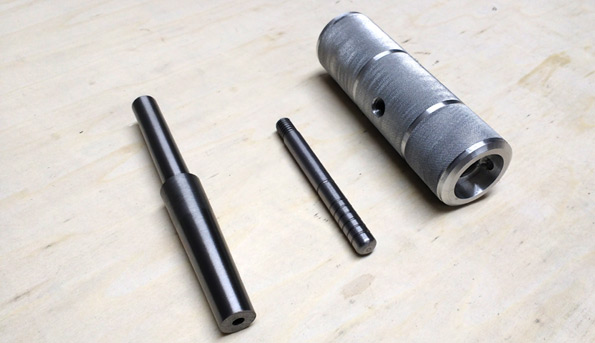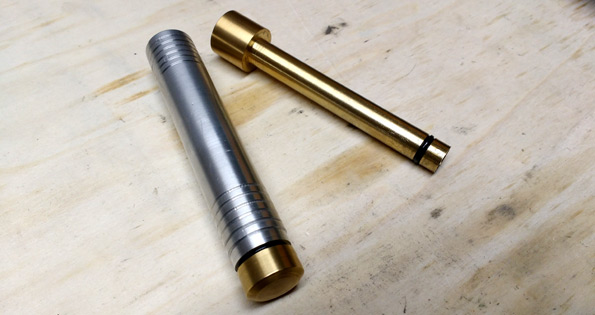






In the back of my head I had been planning to buy a mill sometime next year to grow my burgeoning new hobby - that was the soonest I thought I could justify the expense to myself, and I wanted to give myself time to make sure I would enjoy this work before I spent the money to tool-up the metal shop. But recently, while chatting with a friend in the office about the fact that I am getting interested in metalwork, another coworker mentioned that his mother was trying to figure out what to do with her husband's old milling machine. Apparently he used to restore old outboard boat motors, and had a lightly-used milling machine. I bought it from her for far less that a brand-new (and less capable) mill would have cost me. I got a great machine, and she got a good chunk of her garage back - win-win! It's a Burke #4 horizontal mill, and is quite a beast. It was built in 1942 and is about 600 pounds of American-made cast iron. To get it home, we had to take it apart - but even then, those parts were probably at least a couple of hundred pounds apiece! The van was definitely riding low on the trip back.



Once I got it home, I took it apart further into assemblies I could work with. Then I scraped and sanded out the rust on any of the metal-to-metal sliding surfaces. As you can see in the photo below, there was a good amount of surface rust that needed to be removed - but there was no deeper pitting - which was great news. Once I got everything apart, cleaned up, and oiled I put it all back together in the room I actually wanted it to end up in - which you can see in the top photo. I got it all wired back up and powered it up to make sure it still worked, and it started right up. I've tested all of the axes, and everything is moving smoothly with minimal backlash. I have yet to try and make any chips with it, but now that I've handled every part of the machine I feel like I've got a very good understanding of how it works and what I can do with it.




